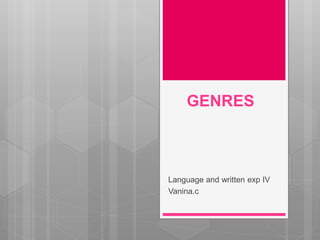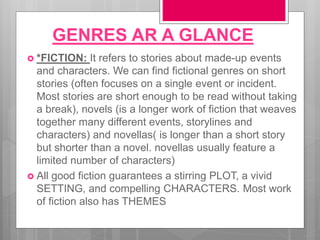Fiction genres include short stories, novels, and novellas which feature plot, setting, characters, and themes. Poetry uses precise word choices and arrangements to create sounds and meanings, using lines and stanzas. Drama is meant to be performed with characters, conflicts, and dialogues. Nonfiction tells about real people, events, and places through genres like news articles, biographies, and speeches.









